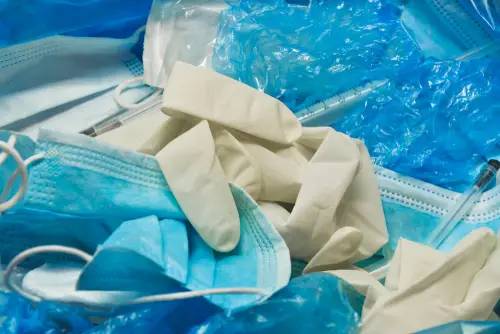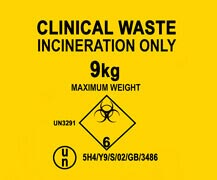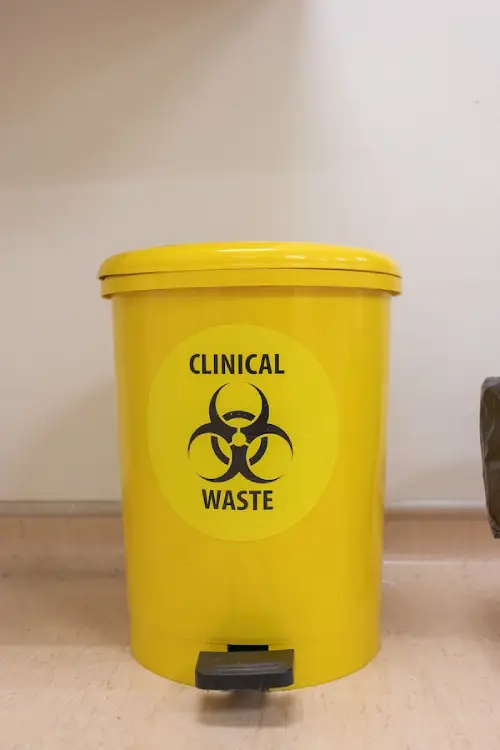
Clinical waste bags are a vital component of any healthcare setting. These specialised bags are designed for the safe and secure disposal of hazardous medical waste, such as needles, bandages, and other medical supplies that could be dangerous if not disposed of properly.
What is Clinical Waste?
Clinical waste management involves the proper handling, disposal and waste collection of clinical waste materials. This is broadly any type of material that is used in a clinical setting and comes into contact with infectious agents or diseases, such as syringes, gloves, gowns, used bandages, and even swabs. This type of waste needs to be disposed of correctly in order to avoid spreading infection or contagion. Clinical waste bags provide a safe and secure way to store and dispose of this hazardous material.
How Do Clinical Waste Bags Help Protect?
These yellow bags help protect both patients and workers from potential contamination caused by improperly discarded hazardous materials. It is important that waste segregation takes place and each type of waste is dealt with properly.
The specialised design ensures that no one comes into contact with any potentially dangerous substances while handling the bag or disposing of its contents. Additionally, these bags prevent the spread of bacteria or viruses on surfaces outside the bag after it has been removed from the area where it was used.
The design also helps ensure that all materials are kept secure until they can be disposed of properly at an authorised facility. The strong construction prevents accidental tearing or puncturing during transport which could lead to spills or contamination outside the bag itself.
Many clinical waste bags also feature “tamper-evident” closures which make it difficult for unauthorised individuals to access the bag’s contents without leaving evidence behind–a key security measure for any hospital or healthcare centre.
Improved Safety and Hygiene
Clinical waste must be disposed of properly in order to protect both patients and staff from potential risks. Improper disposal can result in cross contamination, the spread of infectious diseases, or even accidental exposure to hazardous materials. Clinical waste bags are designed to help eliminate these risks by providing a secure method for disposing of medical and clinical waste. They come in various sizes, materials, and bright yellow in colour so that they are easily identifiable.
Durability & Reliability
Clinical waste bags are not only designed for easy handling but also for durability and reliability. Most bags are puncture-resistant, tear-resistant, and waterproof so that they can stand up to any environmental conditions that you may encounter while disposing of hazardous material.
Ease & Convenience
Using a clinical waste bag makes it easier to transport hazardous materials from one area to another without worrying about spillage or leakage during transit. Many bags also feature integrated handles or straps which make them easier to carry. This helps keep everyone safe from potential risks associated with improper disposal methods.
Types of Clinical Waste
The first step in understanding clinical health waste regulations is understanding the different types of clinical waste. In general, this type of waste can be divided into two categories: infectious and non-infectious. Infectious clinical health waste includes any materials or items that may contain potential pathogens, such as used needles and syringes, medical instruments, bodily fluids, cultures or specimens taken during medical procedures, disposable gowns or gloves worn during medical procedures, and so on. Non-infectious clinical waste includes items such as paper towels and other disposable materials used in healthcare facilities but which do not contain potential pathogens.
Training Requirements
There are certain training requirements associated with handling clinical waste that must also be met by healthcare personnel who come into contact with this type of material on a regular basis. Training typically covers topics such as proper handling techniques for potentially hazardous materials, safe storage methods for hazardous materials, proper labelling practices for identifying potentially hazardous materials, proper disposal methods for potentially hazardous materials, safety protocols when working with potentially hazardous materials, and so on.
Training requirements can vary depending on the jurisdiction where the healthcare facility is located and what type of healthcare; however, all healthcare personnel who handle or come into contact with any type of clinical waste should receive some form of training prior to beginning work duties involving these kinds of materials.
Proper clinical waste management is essential for protecting both healthcare workers and the general public from potential harm caused by exposure to hazardous material contained within this type of material. That’s why there are strict regulations regarding how this type of material should be handled and disposed off properly by following local laws and regulations as well as receiving appropriate training about handling it safely. By adhering to these rules , you can help ensure everyone remains protected from any potential risks associated with coming into contact with clinical waste.
Abbey Polythene supply clinical waste bags across the UK, you can find out more here.

